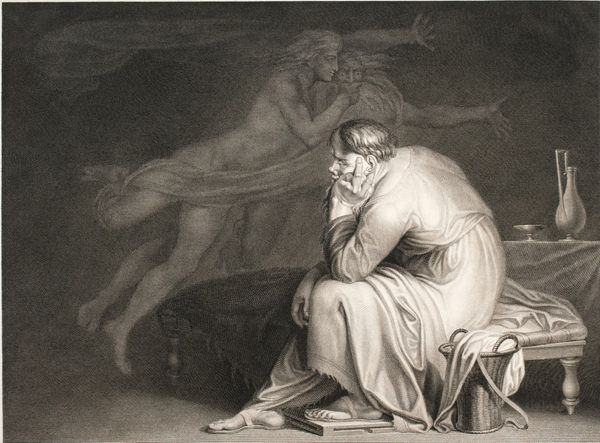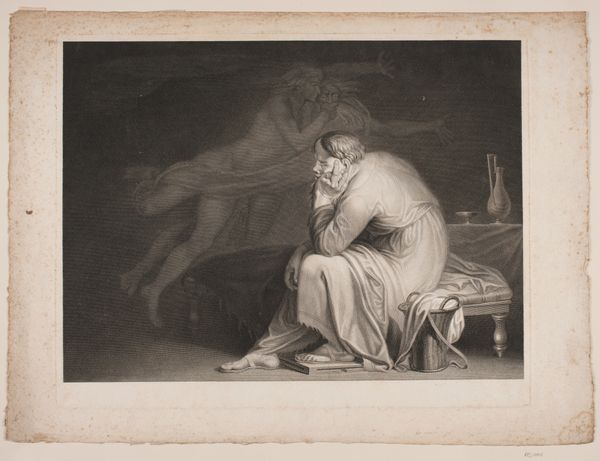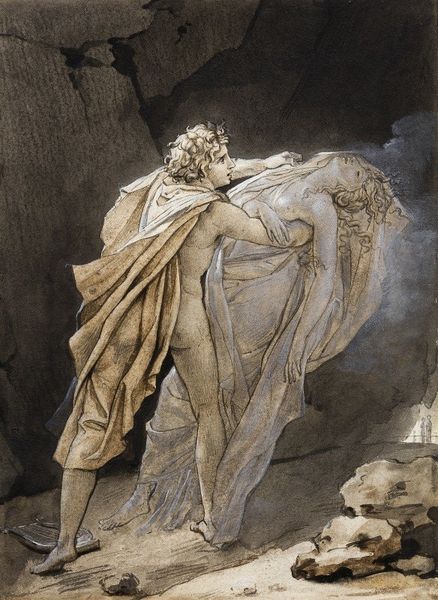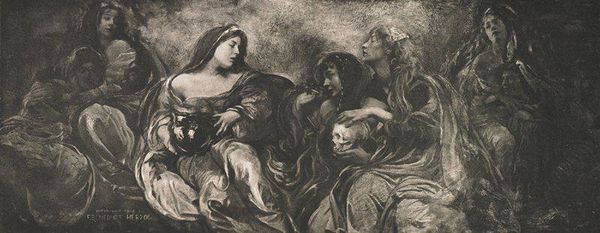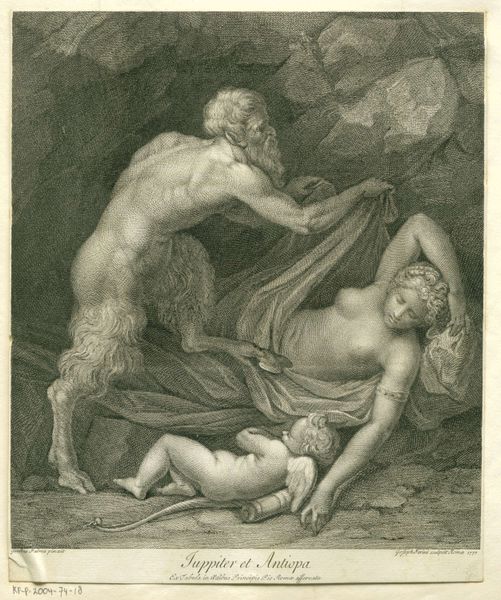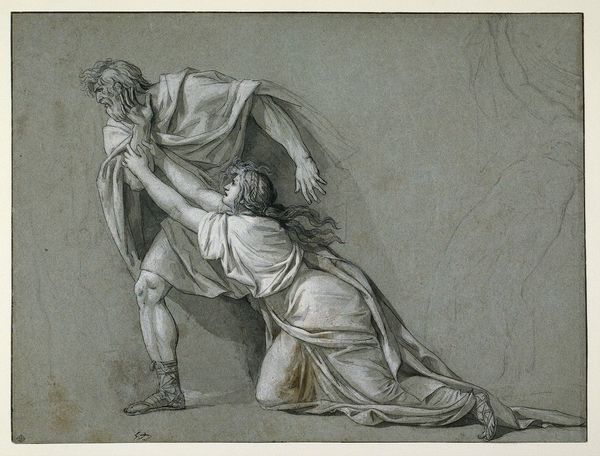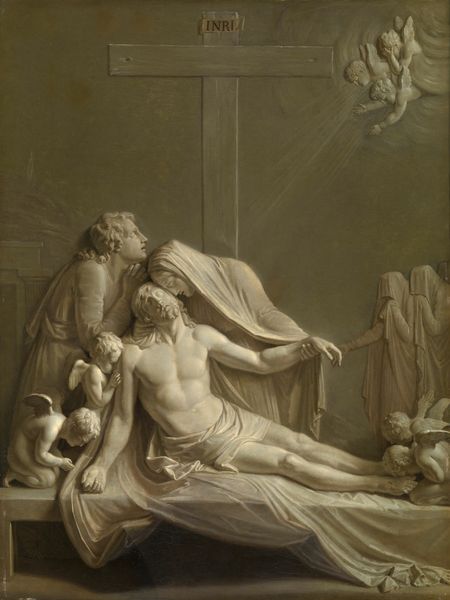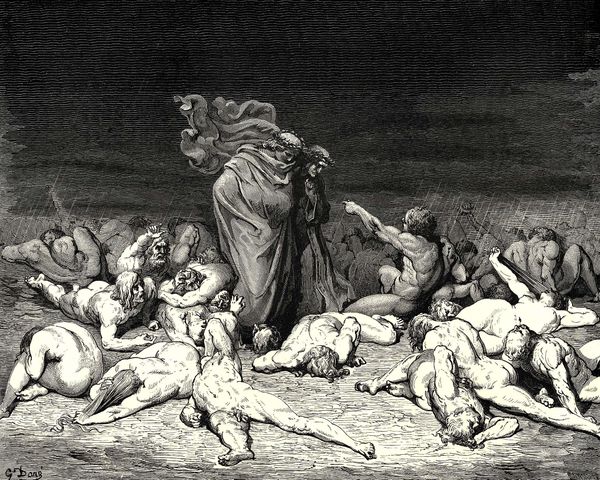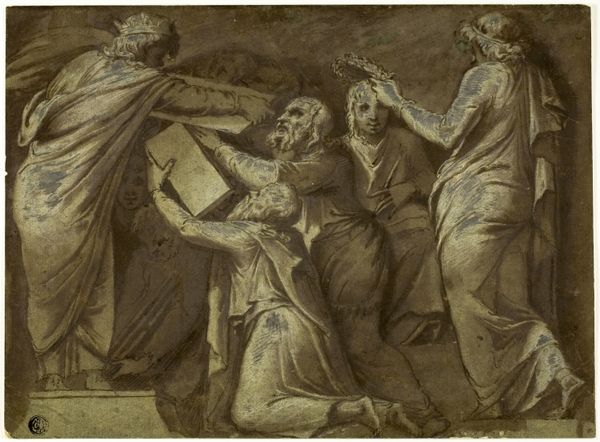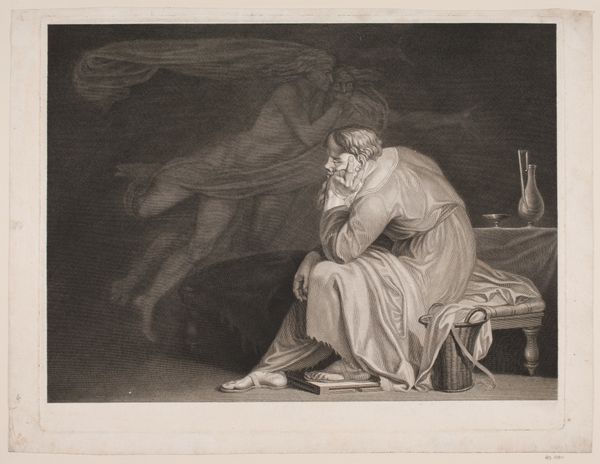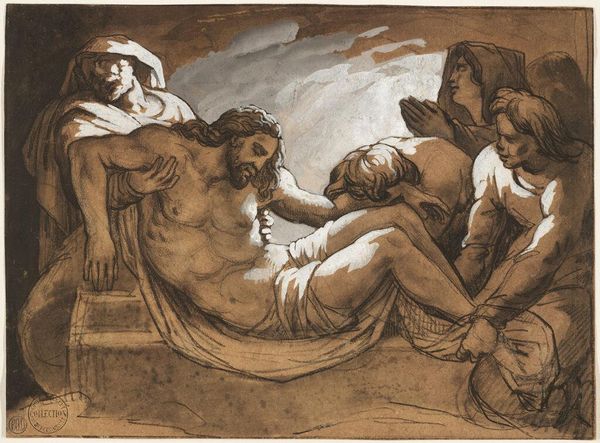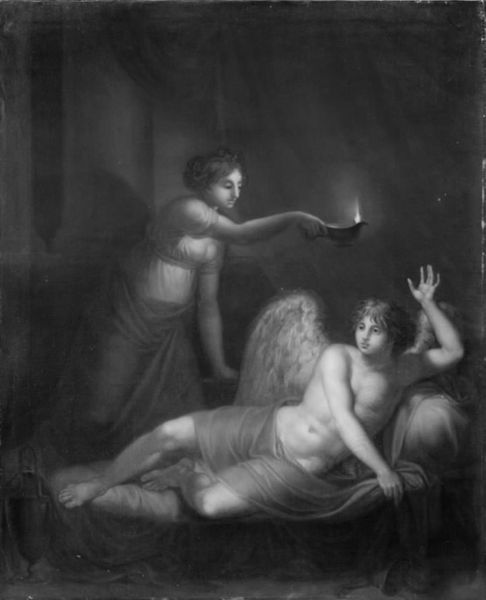
print, etching, engraving
#
portrait
#
neoclacissism
# print
#
etching
#
charcoal drawing
#
history-painting
#
engraving
Dimensions: 432 mm (height) x 518 mm (width) (bladmaal), 376 mm (height) x 477 mm (width) (plademaal), 345 mm (height) x 464 mm (width) (billedmaal)
Curator: This is J.F. Clemens' 1786 print, titled "Sokrates." It employs etching and engraving techniques and is currently held at the SMK, the National Gallery of Denmark. Editor: My initial reaction is one of quiet introspection. The sepia tones contribute to a dreamlike state. It's dominated by this brooding figure and ghostly apparition, a somber scene overall. Curator: The depiction of Sokrates, slumped and burdened by thought, speaks to broader conversations of intellectual freedom within autocratic systems. Clemens seems to highlight Socrates as a figurehead for marginalized and defiant scholars, those who challenge the status quo despite the ever-present threat of the powerful ruling elite. Editor: Absolutely, and look at the symbolic layering: The prominent urn to his right alludes to eventual mortality, echoed by the ethereal figures behind him who seem suspended between life and death. Clemens emphasizes an interweaving of philosophical contemplation with an acceptance of destiny. Curator: We need to understand that Clemens was working at a time when revolutionary ideas were challenging European monarchies, he found resonance in Socrates' story. It questions structures of power in much the same way many leaders in continental Europe at the time sought to do. His radical questioning led to his prosecution; it's interesting how these images are charged politically. Editor: And visually, observe how Clemens uses light to separate the temporal world, inhabited by a three-dimensional Sokrates, from what appears to be a spiritually or mentally envisioned space of symbolic, near allegorical figures in the background. Even the basket in the foreground signals to me a domestic reality he is at once bound to but separate from through his intellectual engagement. Curator: That tension is what elevates this beyond a simple portrait to me, showing a personal life at odds with social expectations. By portraying Socrates like this, Clemens subtly critiques similar issues prevalent in his time: political power and individual liberty. Editor: It leaves you contemplating, doesn't it? Whether it be about philosophy, impending execution, or artistic intent. The visual harmony allows the symbolic density to quietly unfold. Curator: It highlights how symbols are timeless. Looking at this etching helps us trace lines through history connecting questions of power and personal expression from antiquity to our day.
Comments
No comments
Be the first to comment and join the conversation on the ultimate creative platform.
